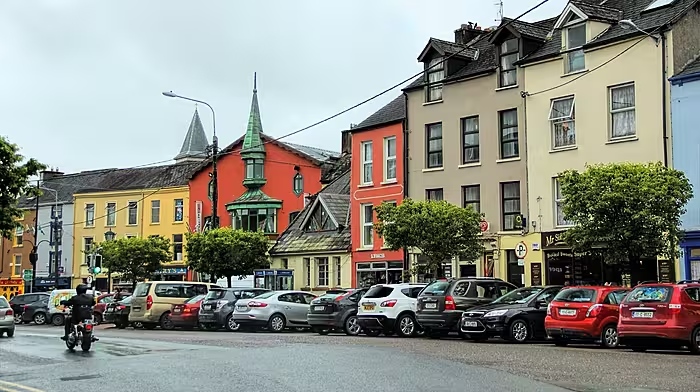BY CONOR POWER
THERE are few sights that set off environmental anxiety more quickly than that of a tour bus arriving at a far-flung beauty spot and disgorging its busy cargo.
While it might look and feel to the casual observer that tour groups arriving in numbers at such places pose a clear and present environmental danger, a recent report published by Trinity College Dublin reassures us that it is not necessarily the case.
The study was written by Andrew Torsney and Yvonne Buckley of the school of natural sciences at TCD.
For their research on the matter of the potential environmental impact of tour groups, they covered a total of 6,000 groups visiting 47 different sites – all of them situated along the Wild Atlantic Way, including eight locations in West Cork – namely Dursey Sound, Galley Head, Garnish Point, Lough Hyne, Mizen Head, Sheep’s Head, Seefin viewpoint and the Old Head of Kinsale.
Their overall findings concluded that 75% of all visitor observations resulted in no identifiable effects on the environment.
However, while tourism groups are quick to highlight this statistic as proof positive that sending or bringing tourists to beauty spots along the Wild Atlantic Way isn’t harming the environment of those places, the findings of the report are somewhat more nuanced.
If you were to boil down this study to one question, then it would probably be: ‘As we embrace nature more and more, is there really enough of it to go around?’
‘That’s it, essentially,’ says Andrew Torsney, the main author of the report. ‘There is an increased demand for access to nature but to facilitate access, we have to understand the sites that we’re driving towards and where we must manage.’
Human behaviour, they conclude, is complex and using mere visitor numbers alone to determine the environmental impact on a particular site is an over-simplification.
With tour groups, for example, one might get the impression of hordes trampling all over a protected site near the Irish coast. According to the observations in the study, however, the behaviour of groups is normally closely monitored by someone in a position of authority and the sensitivities of the site in question are normally communicated to everyone in the group.
The tour guide or group leader typically takes responsibility to ensure that the place is left undamaged.
With individuals, the report said, the potential for people to act in a more insensitive manner is, paradoxically, greater than with the tour groups.
He cites Derrynane House in Kerry as a good example of how one can accommodate large numbers of people and allow them access even to such sensitive locations as coastal sand dunes.
‘Dune systems, in particular, are quite impacted by tourism,’ says Andrew, ‘but in Derrynane House, they manage appropriately so they can accommodate high volumes of tourists and have no perceivable impact on the habitat of the dunes.’
They do it with measures such as laying protective membranes on the designated paths through the dunes so that the continued passage of people doesn’t damage the structure beneath, while enhancing the biodiversity of the site.
As for the eight West Cork sites that were studied as part of this report, they seem to have fared well, overall.
‘Typically, the West Cork sites had lower visitor numbers,’ says Andrew, ‘so the impact tended to be less for that reason.
‘But also, in places such as Dursey, there’s a fair amount of good management practice there already – it’s quite discreet but effective, with paths to follow so that visitors aren’t really free-roaming.’
Places like Galley Head, Andrew points out, had a little more to watch out for in terms of volumes arriving at the car park. While facilities such as the Sheep’s Head, he said, were well managed because of the ‘self-managing’ nature of the users and of the fact that on walking routes, people do little else besides walking.
‘The type of activity that people engage in has an important bearing on the levels of impact on a particular site,’ he says.







